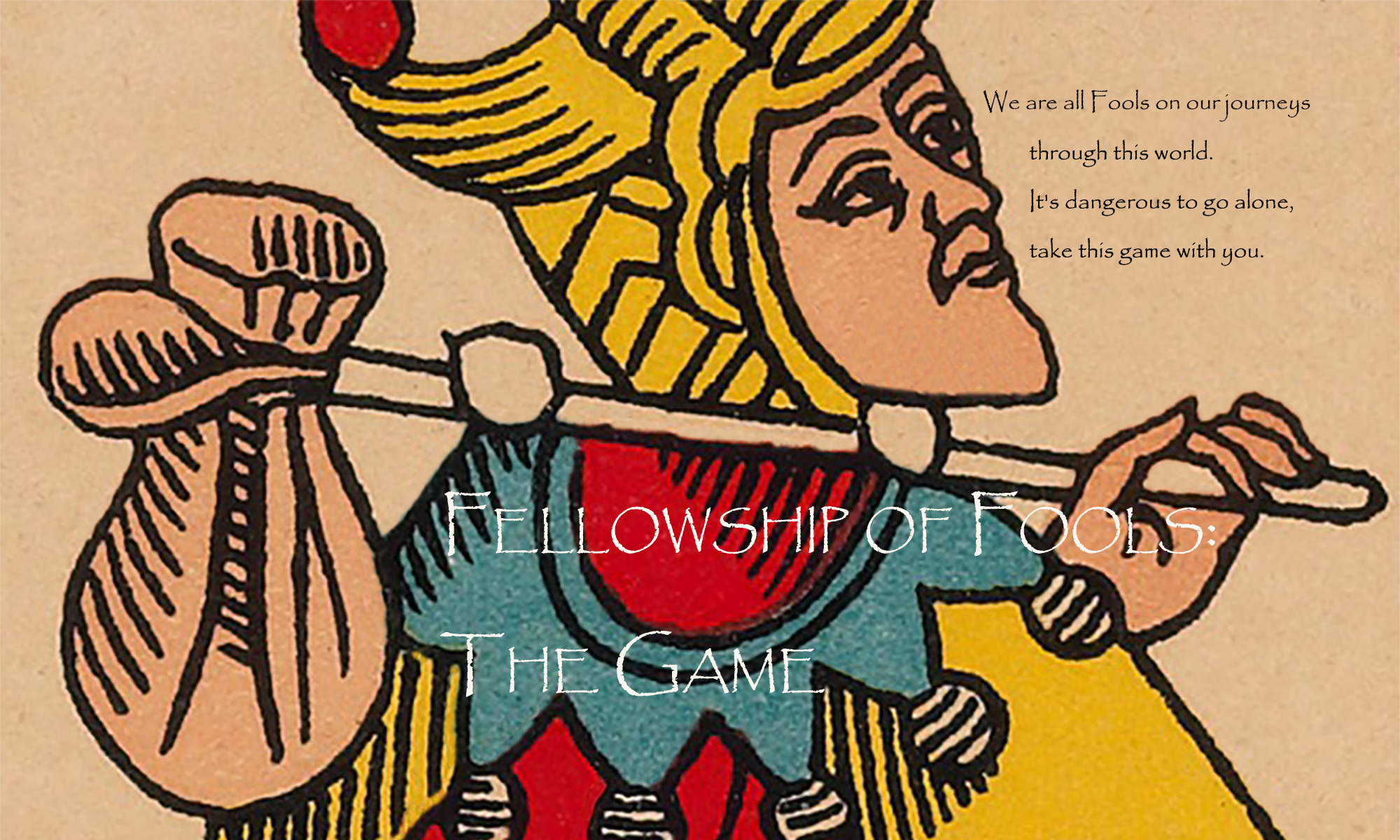RPG Mode: 1 GM and 3-8 Players
This gameplay Mode is played with the Intentional Mod and using the Character Sheets.
This gameplay Mode is meant to guide players through a lighter version of a Roleplaying Game.
- Decide who will be the GM (Game Master). GM rules the world and rules awarding experience points, so be nice to your GM and chose wisely…
- Players and GM agree which Deck(s) of FoF can be used for this session.
- Players then fill out a Character Sheet for the character they will play (or use an old one if everyone has played together before and the GM approves). They can play as themselves, or as a fictional character. If players are struggling with setting up a character, they can use the Story Development Singleplayer Game Mode.
- Players introduce their characters to the group, going clockwise from the GM.
- The GM shuffles the Situation Cards and then draws four Situation Cards. Do not show these cards to the other players.
- The GM picks between the Situation Prompts, playing one Situation Prompt to the players, laying the card down for all to see and reading the chosen Situation Prompt aloud. The game has begun.
- The GM sets aside their additional Situation Cards they drew to play later in the game.
- The GM shuffles the Topic Cards and draws the number of cards equal to the number indicated next to the Situation Prompt they have chosen.
- The GM can choose as many Topic Prompts as they hold (one per card) to help develop the Situation Prompt in play. The GM can withhold Topic Cards to play later. Do not show unplayed cards to players. Discard unwanted cards to the bottom of the Topic Card pile. The GM lays down one or more of their chosen Topic Cards for players, reading the chosen Topic Prompts aloud.
- (Optional) The GM may choose to draw as many Topic Cards as there are players. The GM can then assign as many (or as few) of these cards to specific players. Players do not have to play it however, and can decline it by saying “Pass” and giving a reason why. Players that receive cards in this way should note it on their Character Sheet and try to integrate the Topic Prompts into their player-character. Unassigned Topic Cards are discarded to the bottom of the Topic Card pile.
- The GM then sets the scene and tells a story to the players about the Situation they are all in, and the Topic(s) they are now dealing with. Topics can be particular to a certain player, players, or the whole group, the GM decides. Players do not have to play a card dealt to them, they can decline it by saying “Pass” and giving a reason why.
- Going clockwise from the GM, each player shuffles the Topic Cards and draws the number of cards equal to the number indicated next to the Situation Prompt in play.
- Players can (or not) share Topic Cards with one another, but should keep them hidden from the GM. Cards can be traded among players throughout the game. Players can play any prompt, upright or reversed, but only one prompt per card. After a prompt is played, these cards are discarded to the bottom of the Topic Card pile.
- Any player can now play a Topic Card that they were dealt or traded to play within the Situation Prompt and Topic Prompt(s) the GM laid out for the story/campaign. Players play when they want, in no particular order, as fits into the developing story. After a Topic Card has been played it remains on the board until the game concludes.
- The GM awards experience to the player after every Topic Prompt played, awarding or detracting experience points up to the number next to the Topic Prompt, or negative experience points to the negative equivalent of that number.
- If another player would like to play a Topic Prompt played by another player after they have concluded playing the card, they may, and the GM will award or detract experience points based on their answer to the prompt.
- The GM can at any point play a withheld Topic Prompt or Situation Prompt on an individual player or the whole group. Players do not have to play a card dealt to them, they can decline it by saying “Pass” and giving a reason why. Any time a Situation Prompt is played, the GM may draw new Topic Cards according to the number of the chosen Situation Prompt. Old Situation Cards and Topic Cards remain on the board and can still be played and brought back into the story until the game concludes.
- If the GM runs out of Situation Cards the GM must ask the players if they can draw four more or if the game should be concluded for now.

